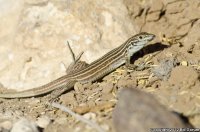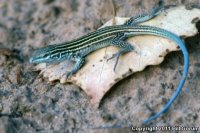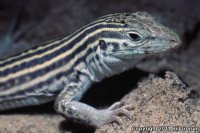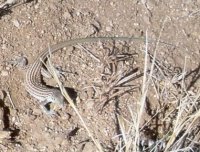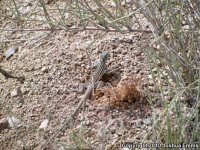| Range: |
 |
| Other Names: |
Blue Tail |
| Description: |
A small (up to 82 mm or 3.25" from snout to vent), slim, brown to black lizard with a long, thin, blue or gray-green tipped tail, and a slim, pointed snout. The body is marked with seven yellow or cream colored stripes and numerous light spots. The scales on the body are small and granular. The scales on the tail are larger, keeled, and rectangular. The scales on the belly are large, smooth, and rectangular. The scales on top of the head are large, smooth, and plate-like. |
| Similar Species: |
No other species of Aspidoscelis in New Mexico exhibits a zigzag vertebral stripe. |
| Venom: |
None |
| Habitat: |
Aspidoscelis neomexicana prefers sandy areas with little vegetation, but can be seen in grasslands, shrublands, and pinon-juniper wooded uplands. This species also can be seen in disturbed areas, such as along fence rows within its range. |
| Behavior: |
This alert, diurnal, fast-moving ground-dweller is most active in the mid-morning and late afternoon. |
| Hibernation: |
It hibernates during the cold months of winter and late fall. |
| Reproduction: |
All New Mexico Whiptails are female (parthenogenetic). Eggs are unfertilized and hatchlings are clones of the mother. One or two clutches of 1 to 4 eggs are laid in June and July. Hatchlings typically begin to emerge in late July. |
| Diet: |
It actively forages by rooting around in organic matter under bushes and digging in the soil around the bases of rocks, and other surface debris. Prey consists of termites, beetles, moths, grasshoppers, ants, and a variety of other insects and insect larvae. |
Adapted from account on reptilesofaz.org
Sources:


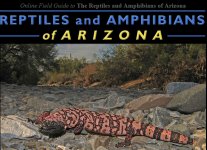

|



